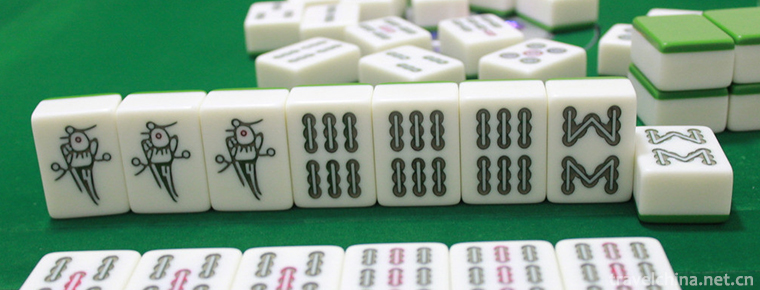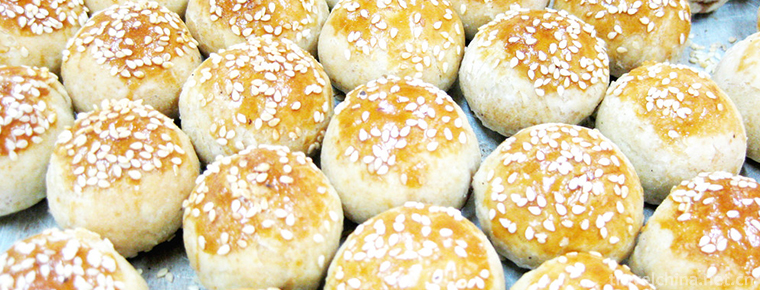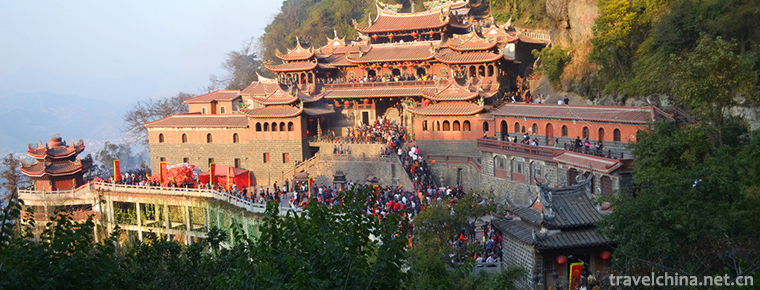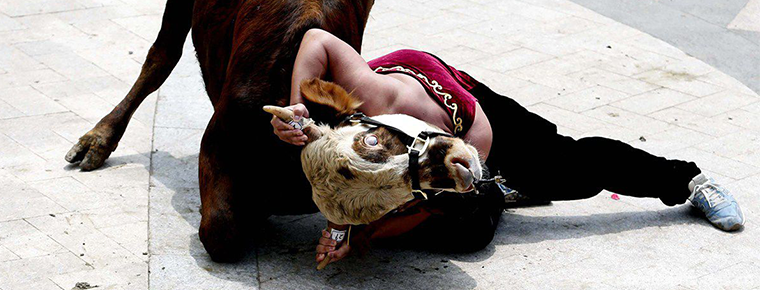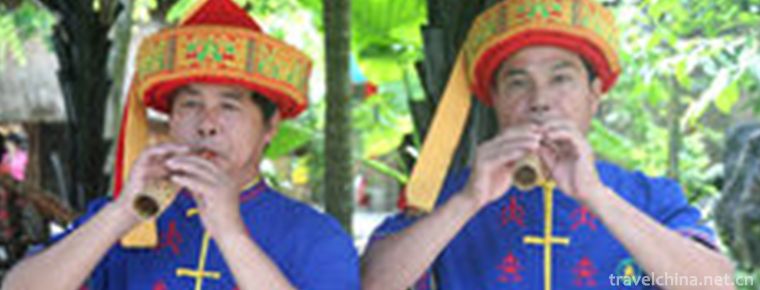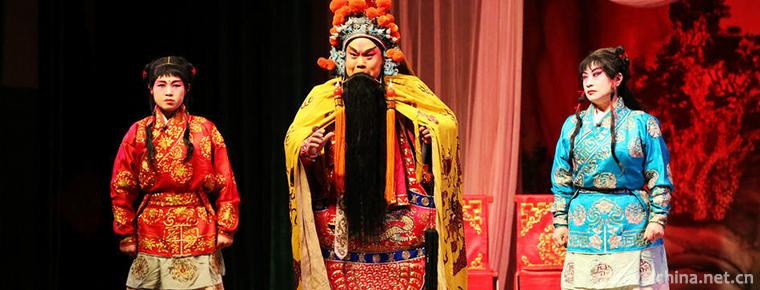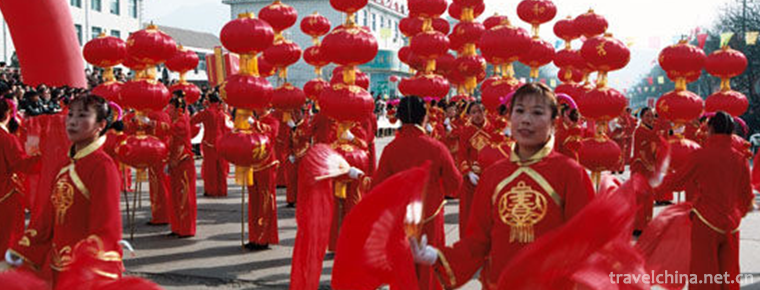Cai Luns Paper making Legend
Cai Luns Paper making Legend
Cailun Paper-making Stories and Legends are legends circulated in Cailun's fiefdoms, burial sites and experimental sites of Yangxian Longting and surrounding areas. They have been listed in the third batch of national non-legacy lists and the second batch of provincial protection projects of Shaanxi intangible cultural heritage. They are one of the best folk literature. There are 13 kinds of stories and legends about Cailun Paper Making. The distribution point of the stories and legends is centered on Longting Guxian County, which is radial. There are 5 main transmission points with 135 inheritors.
In May 2011, Cailun's paper-making legend declared by Hanzhong City of Shaanxi Province was listed in the third batch of national intangible cultural heritage list with the approval of the State Council.
historical origin
Cai Lun was a great leader in the dynasty, and his colleagues were somewhat afraid of him. Even the emperor's wife dared not despise him. Why? Because he is honest and fair, and dares to touch hard, not afraid to offend people. To speak of treating the people, he is a good man. He never bullies people by relying on official power. He often undertakes private visits and does good deeds to save the poor and help the poor.
At that time, paper had not been invented, and official documents were written on bamboo slips. He had to flip through hundreds of kilograms of bamboo every day in his office. He was simply too tired to do so. From his own suffering, he thought of many people's suffering, from many people's suffering, he thought of the interests of the country, so he put forward a task for himself, to create a light, cheap, easy to preserve writing materials.
It's easier said than done. Where to start? He thought hard, but still had no idea. One day, he saw an old man peeling birch bark, inside which layers of thin bark were smooth and light. He picked up several pieces and looked at them repeatedly. The more he looked, the better he thought it was for writing. So he took the birch bark home, studied ink and pen, and wrote a few lines of big characters. A few days later, the birch bark was dry and crumpled on the surface, like the lines on the forehead of a 70-80-year-old man, and some words changed. He angrily threw the birch bark into the firewood heap.
However, he was not disappointed and continued to search for writing materials. No one knows how much he has spent on it and how many roads he has traveled. Only his good friend has found something unusual on a piece of paper. His clothes are getting wider and his language is less. He seldom knows what to do idly. He is always thinking about what. The paper asked him, and he smiled and said nothing.
This spring, Paper went home to celebrate his father's seventieth birthday, and Cai Lun also went. Zhang Zhijia lives in the Huaigou River in Baishui. The traffic is inconvenient and the mountain road is difficult. Cai Lun is a friend of the same heart and soul. He spares no effort and is welcomed by Zhang's father and son. After the birthday celebration, Cai Lun came out of his bed and went out to play outside the village by himself. He swam to a pool and saw a group of small children pulling out thick pulp from the pool, spreading it on the fragments and drying it. He asked the children what they were playing with and said cotton peel. This name is so strange that Cai Lun has never heard of it. So he came to the cotton peel from the baby's hand, looked left and right, looked right and right, looked endlessly, and said something alone in his mouth. After watching for a long time, he asked for a few more tablets from the baby. Then he hurried back to his bedroom, studied ink and brushes, wrote big letters on the cotton skin, and suddenly laughed, "I found it? I found it?" The guard was surprised, thinking that Adult Cai had committed any evil disease. He rushed around and asked about it. Only when he knew the result of the inquiry, did he know what Adult Cai had done. Happy to find good writing materials. As soon as you were relieved, Adult Cai ran out to the pool where the baby was playing. Cai Lun steadily checked the pulp quality in the pool. After a long time, he could not find the main points, so he asked the villagers. Villagers said that the pool was a dead pool, which used to be a pool for drinking cattle. Later, some people threw the rotten cotton left after the marbles into the pool. People disliked dirty and stopped drinking cattle. As a result, everyone threw rotten shoes, rotten socks, ropes and rotten leather into it. After a long time, the water turned into paste. Children take out to dry and play, adults do not know what it is called. Cai Lun listened and paid close attention to it. He asked the guard to get the pulp from the pond and sun it into the thinnest pieces. Then he cut the pieces into squares, stacked them into piles and took them back to his house.
The next day, he played the emperor, found the best writing materials, and sent back the pieces to the emperor for experiment. After the emperor tried, he praised him and encouraged him to try it out.
He dumped the cotton fabric into the pool he dug and soaked it in water, according to the villagers. These cotton fabrics did not know what to do, and for several months they became slurry. He was so anxious that he stirred them with sticks and rafters, stirred them for several months and pounded them for several months, and finally turned them into slurry. He dried as he did in front of him, and at last he got several sheets of thin cotton skin. To commemorate this discovery in Zhang Pao's hometown, Cai Lun named these cotton sheets paper and called each piece a piece. From then on, there was the name paper in the world.
However, the first trial-produced paper, rough, not very soft and smooth, which became a knot in Cai Lun's heart, so he asked the Emperor to resign, to concentrate on the test papermaking. The emperor was not allowed to do so. Cai Lun put on another stamp. Chen said that being an official would only benefit one generation of monarchs and subjects. Paper making would benefit generations of descendants. He resolutely asked the emperor to grant his request. The emperor was reluctant to give up such a loyal and good official, or not allowed. Cai Lun went to the third chapter, saying that after the success of papermaking, he would return to the court and continue to serve the king. The emperor looked at Cai Lun's determination and approved his request with tears.
After Cai Lun resigned, he immediately came to the Baishui Huaigou River. He invited several helpers and was busy making paper day and night. As a matter of fact, the paper made was getting better and better. Cai Lun's name is becoming louder and louder. People who buy paper keep on coming. Although Cai Lun's group works hard day and night, they can't meet people's needs. When he sees this situation, he sends out his helpers to set up paper mills to train apprentices and let more people master this technology.
Later, the emperor asked Cai Lun to return to the dynasty, and Cai Lun went to the court to refuse. The emperor had no choice but to let him live in folk paper-making. Later, Cai Lun enjoyed all his years and died in the Huaigou River. The villagers held a very solemn funeral for him. They also built temples and tablets for him. The monument was later moved to the roadside of Majiazhai, where it remained after liberation. It is still unknown who moved it. As for his paper-making pool, it is still in the Huaigou River.
Some people also said that Cai Lun was summoned to the Heavenly Palace by the Jade Emperor. In the Heavenly Palace, he opened a large paper mill with a great reputation. The Jade Emperor feared that his fame would overwhelm him. Hundreds of years later, he lowered him to the Western world and asked him to make paper there. As a result, paper-making in the West is hundreds of years behind that in China.
primary coverage
Cai Lun? - 121) Jingzhong, a native of Guiyang County in the Eastern Han Dynasty. In the last year of Yongping, Emperor of the Han Dynasty, he came to the palace to serve. In the second year of Zhang He (88 A.D.), Cai Lun was promoted to the rank of a regular servant because of his merits to the Empress Dowager. Cai Lun also served as a minister of Shang Fang Ding as a respectful nine Qings. Cai Lun summarized people's experience in papermaking in the past and innovated papermaking technology. Finally, Cai Hou Paper was made. In the first year of Yuan Xing (105 AD), the emperor of Han Dynasty ordered the promotion of his paper-making method. In the first year of Jianguang (AD 121), he committed suicide because of power struggle. Cai Lun's paper-making technology is listed as the "four great inventions" of ancient China, which has made outstanding contributions to the spread of human culture and the progress of world civilization, and has been highly respected by people for thousands of years. It is regarded as the originator of papermaking and "paper god" by paper workers. Cai Lun ranked seventh in Mike Hart's "100 People Who Affect the Progress of Human History". Cai Lun was listed as the "best inventor ever" published by Time magazine. The opening ceremony of the 2008 Beijing Olympic Games showcased Cai Lun's invention of paper making.
In 102 AD, Emperor Deng Sui was the queen. Deng Sui liked to dance, write and write. Cai Lun was willing to condescend and serve as Shang Fang Ding, in charge of imperial utensils and palace handicraft workshops.
In the following days, Cai Lun devoted all his energy to technical work. At the same time, due to the convenience of his position, he has the opportunity to observe and contact the conditions of production practice. Whenever he had time to spare, he thanked his guests behind closed doors, personally went to the workshop to carry out technical investigation, and learned and summarized the rich experience accumulated by craftsmen over the years. In addition, the paper-making technology was not invented by Cai Lun
In 102 AD, Emperor Deng Sui was the queen. Deng Sui liked to dance, write and write. Cai Lun was willing to condescend and serve as Shang Fang Ding, in charge of imperial utensils and palace handicraft workshops.
In the following days, Cai Lun devoted all his energy to technical work. At the same time, due to the convenience of his position, he has the opportunity to observe and contact the conditions of production practice. Whenever he was free, he thanked his guests behind closed doors and went to the workshop for technical investigation. He learned and summarized the rich experience accumulated by the craftsmen over the years, together with his own ingenious innovation, which played a very important role in promoting the development of metal smelting, casting, forging and mechanical manufacturing technology at that time. For example, steel knives at that time were made of scrambled iron and were forged many times to make steel. The artifacts manufactured at that time were precisely made in terms of quality, performance and appearance, which could be imitated by later generations.
However, Cai Lun's greatest achievement is in papermaking. When observing the rural workshops, he unexpectedly saw such a phenomenon: after silk reeling and bleaching by silkworm women, a layer of short silk floss was often left on the bamboo silk, which could be used for writing. So Cai Lun got a great inspiration from it. He began to collect bark, waste hemp, rags, old fish nets and other raw materials. He applied file, boiling, soaking, ramming, copying and other methods in court workshops, and tried to use plant fiber for papermaking. It took no pains to make the plant fibre paper. After finishing the paper-making process and methods, Cai Lun wrote a pamphlet, together with the plant fibre paper made, and presented it to the Emperor of Han Dynasty. He praised the emperor. Cai Lun's paper-making technology spread quickly. People call this kind of paper "Caihou Paper", and the whole country "can't help but use it".
He Di Youfu saw this new type of paper, but he did not experience the convenience of writing. He Di died in the same year that plant fiber paper appeared. The son of Empress Deng, who was born less than 100 days ago, succeeded Liu Long, the martyr, and became the youngest emperor in history. Next to ascend the throne of God is the 13-year-old Liu Hu, for Andi. When the emperor was young, Deng Sui was the real person in power. She continued to reuse Cai Lun and named him "Dragon Pavilion Marquis". She leaped from a "small yellow gate" to a noble king.
Originally, Cai Lun's invention of paper was nailed on the board, because the biography of Cai Lun in the Later Han Dynasty said: "Since ancient times, bamboo slips have been mostly compiled, which are called paper by those who use silk. It is expensive and simple, and inconvenient for people. Lun deliberately uses tree skin, hemp head and cloth. Fishnet is paper. In the first year of Yuanxing, it was played. Emperor is good at his abilities, and he can not help but use them. Therefore, the world is called Caihou Paper. As a recognized official history of China, it should have a high credibility. Therefore, some later Chinese and foreign writings respected Cai Lun as the inventor of paper in the Eastern Han Dynasty, and presented him to the Han Dynasty and Emperor Liu Zhao in 105 AD as the year of paper's birth.
However, since modern times, archaeologists have found some papers earlier than Caihou Paper in the Eastern Han Dynasty. For example, in 1986, the ancient paper of the Western Han Dynasty was found again in Fangmatan, Tianshui, Gansu Province. Unlike previous archaeological discoveries, the unearthed paper is of good quality, smooth and smooth surface, thin and soft texture, with pictures of mountains, rivers and roads drawn with fine ink lines on it. According to expert research, the "birthday" of this ancient paper was in the early Western Han Dynasty, more than 300 years earlier than Cailun's paper-making history in the Eastern Han Dynasty. Therefore, the earliest horse beach paper in Tianshui, which is known in the world so far, became the only material evidence that China had excellent paper in the early Western Han Dynasty.
This can also confirm some archaeologists'inference that Cai Lun is not the inventor of paper, and thus infer that Cai Lun is a reformer of paper making, not an inventor. Cai Lun only expanded the source of paper-making raw materials, made full use of the waste materials such as bark, rags, hemp head and fishnet, and reduced the cost of paper, especially the use of bark as the forerunner of raw pulp paper, which opened up a broad way for the development of paper industry. Obviously, this statement is closer to the truth of history.
Nevertheless, Cai Lun's achievements as an innovator of papermaking are worthy of praise. It is because of the popularity of plant fiber paper that Chinese culture gradually flourishes and progresses with it as its carrier. His own ingenuity and innovation played a great role in promoting the development of metal smelting, casting, forging and mechanical manufacturing technology at that time. For example, steel knives at that time were made of scrambled iron and were forged many times to make steel. The artifacts manufactured at that time were precisely made in terms of quality, performance and appearance, which could be imitated by later generations.
However, Cai Lun's greatest achievement is in papermaking. When observing the rural workshops, he unexpectedly saw such a phenomenon: after silk reeling and bleaching by silkworm women, a layer of short silk floss was often left on the bamboo silk, which could be used for writing. So Cai Lun got a great inspiration from it. He began to collect bark, waste hemp, rags, old fish nets and other raw materials. He applied file, boiling, soaking, ramming, copying and other methods in court workshops, and tried to use plant fiber for papermaking. It took no pains to make the plant fibre paper. After finishing the paper-making process and methods, Cai Lun wrote a pamphlet, together with the plant fibre paper made, and presented it to the Emperor of Han Dynasty. He praised the emperor. Cai Lun's paper-making technology spread quickly. People call this kind of paper "Caihou Paper", and the whole country "can't help but use it".
He Di Youfu saw this new type of paper, but he did not experience the convenience of writing. He Di died in the same year that plant fiber paper appeared. The son of Empress Deng, who was born less than 100 days ago, succeeded Liu Long, the martyr, and became the youngest emperor in history. Next to ascend the throne of God is the 13-year-old Liu Hu, for Andi. When the emperor was young, Deng Sui was the real person in power. She continued to reuse Cai Lun and named him "Dragon Pavilion Marquis". She leaped from a "small yellow gate" to a noble king.
Originally, Cai Lun's invention of paper was nailed on the board, because the biography of Cai Lun in the Later Han Dynasty said: "Since ancient times, bamboo slips have been mostly compiled, which are called paper by those who use silk. It is expensive and simple, and inconvenient for people. Lun deliberately uses tree skin, hemp head and cloth. Fishnet is paper. In the first year of Yuanxing, it was played. Emperor is good at his abilities, and he can not help but use them. Therefore, the world is called Caihou Paper. As a recognized official history of China, it should have a high credibility. Therefore, some later Chinese and foreign writings respected Cai Lun as the inventor of paper in the Eastern Han Dynasty, and presented him to the Han Dynasty and Emperor Liu Zhao in 105 AD as the year of paper's birth.
However, since modern times, archaeologists have found some papers earlier than Caihou Paper in the Eastern Han Dynasty. For example, in 1986, the ancient paper of the Western Han Dynasty was found again in Fangmatan, Tianshui, Gansu Province. Unlike previous archaeological discoveries, the unearthed paper is of good quality, smooth and smooth surface, thin and soft texture, with pictures of mountains, rivers and roads drawn with fine ink lines on it. According to expert research, the "birthday" of this ancient paper was in the early Western Han Dynasty, more than 300 years earlier than Cailun's paper-making history in the Eastern Han Dynasty. Therefore, the earliest horse beach paper in Tianshui, which is known in the world so far, became the only material evidence that China had excellent paper in the early Western Han Dynasty.
This can also confirm some archaeologists'inference that Cai Lun is not the inventor of paper, and thus infer that Cai Lun is a reformer of paper making, not an inventor. Cai Lun only expanded the source of paper-making raw materials, made full use of the waste materials such as bark, rags, hemp head and fishnet, and reduced the cost of paper, especially the use of bark as the forerunner of raw pulp paper, which opened up a broad way for the development of paper industry. Obviously, this statement is closer to the truth of history.
Nevertheless, Cai Lun's achievements as an innovator of papermaking are worthy of praise. It is because of the popularity of plant fiber paper that Chinese culture gradually flourishes and progresses with it as its carrier.
Inheritance status
1. Older residents in society, especially in rural areas, are generally more interested in excellent folk culture, while most young people nowadays do not like it very much. With the natural reduction of the elderly, the number of inheritors of folk culture, especially folk literature, has been greatly reduced, and there has been a shortage of successors.
2. Under the impact of TV and network culture, the audience of folk local literature has narrowed down. People are used to stories on TV and on the Internet.
3. Because of the change of agricultural industry structure, the way of farming which gathered people to work together was ended and turned into individualized production. This reduces the platform (place) for the dissemination of folk literature.
4. The administrative power at the township and village level has been reduced, and there is basically no way of organizing mass entertainment by administrative order. The position of rural culture has been weakened, which weakens the infiltration of folk literature.
5. The shortage of funds has affected the excavation, collation, research and dissemination of folk literature.
Inheritance significance
historical value
Although Cai Lun's paper-making folktales and legends belong to the category of literature, they have the shadow of history, which reflects the truth of history from one side. Comparing historical books, stone tablet records and publications with their legends, we can find that there are many coincidences between them. Therefore, these legends are not only of literary value, but also of historical value. They provide valuable information for us to study the origin of world paper-making, the birthplace of plant fibre paper and the historical development of paper-making.
Cultural value
There are more than ten kinds of legends about Cailun Paper-making in Longting of Eastern Han Dynasty circulating in the upper reaches of Hanshui River basin in southern Shaanxi Province. The content is very rich and extensive, which undoubtedly plays a decisive role in the dissemination of Cailun Paper Culture. In the history of 1900, Cai Lunlong Pavilion's legendary stories of papermaking have been passed down from mouth to mouth, continuously, and deeply rooted in the hearts of the people. Women and children know that they are not bored with telling stories, and they never tire of listening to them. This not only shows that Cai Lunlong Pavilion's legendary stories have a strong artistic charm, but also shows that the society has a high degree of recognition of this folk culture. In Hanshui culture, Cai Lun holds a glorious page in the folk literature content of Longting Paper-making. It is an important material for us to study this regional culture. Through these legends, we can also see the spirit and outstanding creativity of the ancestors, so these legends are also a huge spiritual wealth for us.
Scientific value
Firstly, there are many scientific elements in the legends of Cailun Paper Making in Longting. Almost every legend talks about some technical problems of experiment and invention of papermaking. They well reflect the wisdom of the ancients, and warn the future generations of the correct attitude of scientific research. Secondly, at the beginning of the second century, Cai Lun, a scientist, invented plant fibre paper, which accelerated the pace of human cultural transmission. It can be said without exaggeration that this has changed the course of human history, and the world has made great strides towards civilization. The Longting Pavilion and its surroundings in the upper reaches of Hanshui River, as one of Cai Lun's experimental bases for the invention of papermaking, deserves to be written into the history of the development of science and technology in China and the world, and become a sacred place in the world's paper culture. This is very remarkable. Finally, I want to say a little more. The basic technological links of frustration, tamping, copying and baking reflected in the legend of Cailun Paper Making in Longting are still the basic links in today's paper machine production. These legends not only record the history, but also foresee the future, which is the golden rule. In this sense, they have been endowed with more outstanding value than the general folk literature. They are the most useful materials for us to study the history of Ancient Papermaking science.
Although Cai Lun's paper-making legends and stories belong to the literary category, they have the shadow of history, which is a valuable material for us to study Cai Lun's paper-making historical facts from one side. People listen to it all the time and have a strong artistic charm. In Hanshui culture, the legend of Longting Cailun Paper Making occupies a glorious page. There are many scientific components in the legend of Longting Cailun Paper Making Story. Almost every plot involves the experimental and technical problems of papermaking. The technical links such as tamping and baking reflected in the legend are still the basic links in the production of paper machines. The legend has high historical, cultural and scientific value, but it is endangered for various reasons and needs urgent protection.

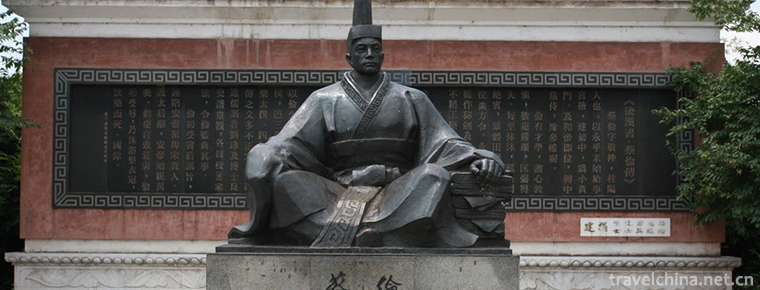
-
Mahjong
Mahjong, originated in China, is commonly known as Sparrow in Guangdong, Hong Kong and Macao. It is a game invented by the ancients of China,.
Views: 160 Time 2018-11-13 -
Chess cake
Chess cake is a special product of Tangshan District in Hebei Province. It is named for its shape like a small drum and a chess piece.
Views: 169 Time 2018-11-27 -
Tongzhou Forest Park of Grand Canal
Tongzhou Forest Park of the Grand Canal is located on both sides of the North Canal of Tongzhou New Town, Beijing. It starts from Luyang Bridge on the Sixth Ring Road in the north and Wuyao Bridge in .
Views: 81 Time 2019-01-07 -
Qingshui rock
National AAAA tourist attractions, built in the Northern Song Dynasty, were rebuilt in the Ming Dynasty. In the Northern Song Dynasty, the priest Puzu Zen Buddhist monk once practiced here.
Views: 184 Time 2019-02-07 -
Eco health Tourism Resort in Sishui Shandong Province
"Shandong Sishui Violent Eco-health Tourism Resort" is a pioneer in China, which combines superior ecological environment, long-standing health culture and modern leisure and vacation indust.
Views: 218 Time 2019-02-13 -
Bullfight
Bull-wrestling is a traditional competitive sport of the Hui people. It means throwing, wrestling and throwing. It can also be called bullfighting of the Hui people..
Views: 100 Time 2019-05-01 -
Li Folk Songs
Folk songs play an important role in daily life. Almost all men, women and children can sing. Especially on festive days, singing is an indispensable recreational activity. In the daily production wor.
Views: 308 Time 2019-05-12 -
Lv Jiahe Folk Song
Lvjiahe Folk Song is a kind of folk song which is popular in Lvjiahe Village, Guanshan Town, Danjiangkou City, Hubei Province. Located in Wudang Mountain Scenic Area, the village retains a large numbe.
Views: 198 Time 2019-05-15 -
Shijiazhuang Silk String
Shijiazhuang silk string is also known as string tune, string tune, Hexi tune, small drum tune, Luoluo tune, daughter tune and so on. It is a local traditional drama in Hebei Province and one of the n.
Views: 176 Time 2019-06-15 -
Zuoquan Xiaohua Opera
Zuoquan Xiaohua Opera is a kind of Han folk song and dance drama which originated in Zuoquan County of Shanxi Province and spread in Yushe and Heshun areas near Zuoquan County. Its style is: one step .
Views: 239 Time 2019-08-16 -
Population of Deyang
By the end of 2018, the total number of households in Deyang was 1 million 575 thousand, and the total registered residence population was 3 million 870 thousand. Among them, there were 1 million 242 thousand urban residents and 2 million 629 thousand rural population.
Views: 319 Time 2020-12-14

